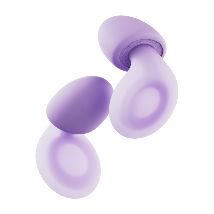7 Transfer of tensile force
7.5.1 Loop connections
Loop connections as exemplified in Fig. 7-54, can be used to transfer tensile forces, bending moments and shear forces. It is used between solid slabs where continuity is demanded. However, the production is more difficult due to projecting bars.
그림 7-54에 예시된 루프 연결은 인장력, 굽힘 모멘트 및 전단력을 전달하는 데 사용할 수 있습니다. 연속성이 요구되는 단단한 슬래브 사이에 사용됩니다. 그러나 돌출된 철근으로 인해 제작이 더 어렵습니다.

The connection can fail due to rupture of the reinforcement bars, crushing of the joint concrete (mortar) or splitting of the joint concrete in the plane of overlapping loops. The design aims at preventing concrete failures to occur before the reinforcement loops yield. Transverse reinforcement within the overlap is necessary in order to achieve an acceptable behavior. If properly designed the loop connection can exhibit substantial ductility. For the behavior of loop connections reference is made to Dragosavik et al. (1975) who reported results from extensive experimental investigations and gave recommendations for design.
철근의 파열, 접합 콘크리트(모르타르)의 파쇄 또는 겹치는 루프 평면에서 접합 콘크리트의 갈라짐으로 인해 연결이 파괴할 수 있습니다. 이 설계는 철근 루프가 항복하기 전에 콘크리트의 파괴가 발생하지 않도록 방지하는 것을 목표로 합니다. 허용 가능한 거동을 달성하기 위해서는 이음부 내 횡방향 보강이 필요합니다. 루프 연결이 적절하게 설계되면 상당한 연성을 나타낼 수 있습니다. 루프 연결의 거동에 대해서는 광범위한 실험 조사 결과를 보고하고 설계에 대한 권장 사항을 제공한 Dragosavik 등(1975)을 참조하세요.
The tensile force from one element to the other is transferred by inclined compressive struts between overlapping loops, see Fig. 7-55. The inclined strut originates from radial stresses σc,rad acting against the bend of the loop. The spread of stresses from the loop to the strut causes local splitting stresses due to high bearing stresses inside the loop. Furthermore, the inclination of the strut also gives a transverse tensile force that needs to be balanced. As a consequence of this model the transverse reinforcement needs to be distributed between the two ends of the overlap and be placed inside the loops. The transverse reinforcement can be designed by a simple strut-and-tie model, see Fig. 7-55.
한 요소에서 다른 요소로의 인장력은 겹치는 루프 사이의 경사 압축 스트럿에 의해 전달됩니다(그림 7-55 참조). 경사 스트럿은 루프의 굽힘에 대해 작용하는 반경 방향 응력 σc,rad에서 비롯됩니다. 루프에서 스트럿으로 응력이 확산되면 루프 내부의 높은 베어링 응력으로 인해 국부적인 분할 응력이 발생합니다. 또한 스트럿의 경사는 균형을 맞춰야 하는 횡방향 인장력도 제공합니다. 따라서 이 모델에서는 횡보강재를 오버랩의 양쪽 끝 사이에 분산 배치하고 루프 내부에 배치해야 합니다. 횡보강은 간단한 strut-and-tie 모델로 설계할 수 있습니다(그림 7-55 참조).
The transverse force Ft in the reinforcement at one side of the overlap is calculated as
이음의 한쪽에 있는 보강재의 횡력 Ft는 다음과 같이 계산됩니다.


The tensile force in one U-bar is balanced in the joint by the radial concrete stresses. A horizontal equilibrium for one U-bar gives
하나의 U-바의 인장력은 반경 방향 콘크리트 응력에 의해 조인트에서 균형을 이룹니다. 하나의 U-바에 대한 수평 평형은 다음을 제공합니다.

In order to limit the bearing stresses to acceptable values the following condition needs to be fulfilled, according to Basler and Witta.(1966).
Basler and Witta(1966)에 따르면 베어링 응력을 허용 가능한 값으로 제한하려면 다음 조건을 충족해야 합니다.

다음 조건을 충족하는 디테일링이 권장됩니다.
Furthermore, it is recommended that the length lp of overlap should not be less than the height of the U-bar and greater than 20d, see Fig. 7-54. Furthermore, the straight part of the overlapping loops should be at least 3d. The spacing between overlapping loops should be less than 4d and it is recommended that the spacing s between loop connections (i.e. between pair of loops) is less than 300 mm
또한 겹침이음 길이 lp는 U바의 높이보다 작지 않아야 하며 20d보다 커야 합니다(그림 7-54 참조). 또한 겹치는 루프의 직선 부분은 최소 3d 이상이어야 합니다. 겹치는 루프 사이의 간격은 4d 미만이어야 하며 루프 연결 사이(즉, 루프 쌍 사이)의 간격 s는 300mm 미만인 것이 좋습니다.

If the connection is subjected to bending, only the upper bar is in tension, as shown in Fig. 7-57, and the connection can be designed accordingly.
연결부가 구부러지는 경우 그림 7-57과 같이 상단 막대만 장력을 받게 되며, 이에 따라 연결부를 설계할 수 있습니다.

출처 : fib Bulletin 43 Structural connections for precast concrete buildings
참고문헌
Basler and Witta (1966): Basler, E. and Witta, E., Grundlagen für kraftschlussige Verbindungen in der Vorfabrikation. (Basics of structural connections in prefabrication. In German). Technische Forschungs- und Beratungsstelle der Schweizerischen Zementindustrie, Wildegg, 1966.
Dragosavić et al. (1975): Dragosavić, M., van den Beukel, A., Gijsbers, B.J., Loop connections between precast concrete components loaded in bending. Heron, Vol. 20, No. 3, 1975.
Harryson (2002): Harrysson, P., Industrial bridge construction – merging development of process, productivity and products with technical solutions. Chalmers University of Technology, Department of Structural Engineering – Concrete Structures, Publication 02:1, Göteborg 2002.









최근댓글